Christmas in German POW camp Stalag Luft 1
And in memory of Lt. Elroy Frank Wyman, murdered by a German guard.
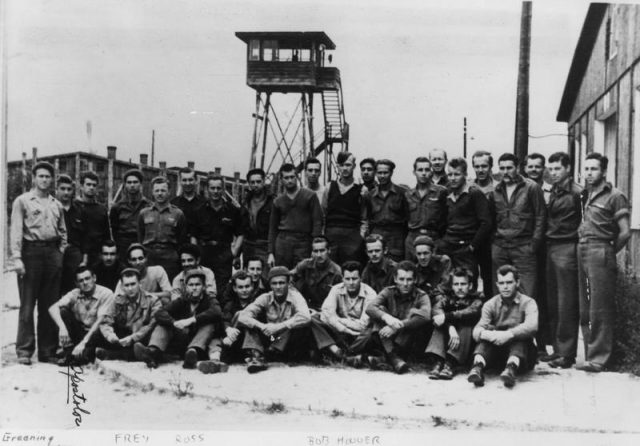
The posts I most enjoy writing about are the ones I didn’t plan, but somehow found.
I’ve written about Christmas Eve in World War II before, including in 2014, Christmas 1944: The Battle of the Bulge. and a follow up with reader memories in 2015, Christmas Eve in the Ardennes 1944.
In searching for another story to tell this Christmas Eve, I stumbled upon memories of Christmas Eve 1943 at Stalag Luft 1, a POW camp for captured Allied airmen.
POWVETS.com provides this description of the camp:
Stalag Luft 1 was opened end 1941 as a British Officer POW camp and was closed in April 1942 with British Officers moved to other POW camps. Reopened in October 1942 with transfer of 200 RAF NCOs from Stalag Luft 3. In 1943 also American POWs came to the camp. By the time of liberation the camp held 7 700 American Officers and 1 400 British POWs.
Memories of survivors and family members are at Wartime Memories website. More details, including a schematic of the camp and an extensive collection of photos are at the 392nd Bomb Group and 303rd Bomb Group websites and also Memories Shop website.
And it was at Stalag Luft 1 Online that I found accounts of Christmas at the camp, including these personal accounts, among many others:
Perk Chumley’s memories of Christmas 1944 at Stalag Luft I:
“The day before Christmas was a cloudy day about 20 degrees Fahrenheit the camps glee club and string orchestra presented a program of Christmas carols and excerpts from “Handel’s Messiah”. At midnight the Catholic’s were permitted to have mass and the Protestant’s had their Christmas service at noon on Christmas day. During the evening one of our room mates played an accordion that we got from somewhere and we sang a few of the old favorite songs. It looked to us like Christmas would be just another day.
Christmas Day in “Kriegeland” a cold and cloudy day. Roll call was a little later today. For breakfast we had Vienna sausage and fried potatoes. At 2:00 we had Protestant service. It was a short service of prayers and Christmas carols. This afternoon I cooked a soup using some of the tomato juice from my last parcel, a bouillon cube, dehydrated meat and rice and noodle soup mix. It was really quite good. The Christmas evening meal put the Thanksgiving meal in the back seat. The menu was as follows: Turkey (very good), mashed potatoes and Pate gravy, boiled carrots, chocolate pie and coffee. In addition to this the band put on a program, Chuck Wiest sang three songs and really did a good job, they had a Santa Claus and all. It was a climax to a rather sad and lonesome Christmas Day. As usual we had the Red Cross and the YMCA to thank for our pleasure.”
* * * *
Clair Cline and the prison camp violin:
“My most memorable moment was Christmas Eve. As my buddies brooded about home and families, I began playing “Silent Night.” As the notes drifted through the barracks a voice chimed in, then others. Amid the harmony I heard a different language. “Stille Nacht, Heilige Nacht, alles schläft, Einsam wacht . . . ” An elderly white-haired guard stood in the shadows, his eyes wet with tears.”
He carved a violin out of rough hewn bed slats. Click here to read [view a photo].
* * * *
Ken Williams of Murder , Inc. fame, Christmas 1943 with the Commandant of Stalag Luft I
“On Christmas Eve, 1943, three German guards came to our room (about twenty men to a room) and said I was wanted by the German Commandant. They took me to the German officer’s club. It was decorated for Christmas with a Christmas tree and all the trimmings. The Commandant was seated at a table with two other men. He stood up, greeted me and shook hands. He asked me to have a seat and offered me some wine. I hesitated to drink the wine thinking it might be drugged, but the Commandant assured me it was good German Rhine wine, so I did take a few sips.
The Commandant said the man seated across from him had come up from Berlin to talk to me. The Commandant then stood up and said he had to leave, and he and the other officer left the table.
The man from Berlin was wearing a sweater (so no military rank) and military riding pants and boots. I believe he was a general from the way the Commandant, who was a colonel, had treated him. He was a good-looking man and appeared to be about forty years of age.
He asked me about Christmas in the United States and at my home. We wanted to know what I thought my parents would be doing at that time on Christmas Eve. I told him about Christmas Eve at home, exchange of presents, Midnight Mass, and about my family.
He then showed me a Berlin newspaper with my picture on the front page, a front view and the back view with the “Murder Inc.” on the back of the jacket. He said he had been sent up from Berlin to see if I were really a gangster. He said it was obvious to him that I was not a gangster and he thought that I would probably hear no more about “Murder Inc.” He wanted to know why we had given the plane this name. I told him I did not name the plane and did not know why it was so named.
He gave me the newspaper and said he thought I might like to have it as a souvenir. I have that very same paper in front of me now at my desk.”
To read the complete story of Murder, Inc. click here
As much as I had not been looking to write about Stalag Luft 1, I was not looking to write about 2nd Lt. Elroy F. Wyman.
The website provides eyewitness accounts:
Our worst fears were realized on 18 March when the 8th Air Force was in the Berlin area and a long air raid confinement took place. About 45 minutes after the alert was given at 1030 hours a South African Air Force officer in the British compound, Lt. G. V. Whitehouse, forgetfully left his barracks with a basin full of kitchen refuse. He was in the process of spreading this on his kitchen garden as a manure dressing when a walking guard shouted and fired at the same time. The 7.92 mm bullet, fired at about 40 yards range, passed through Whitehouse’s body and two room walls in a barracks 60 yards distant. The severely wounded Whitehouse dropped in his tracks to be retrieved by friends. When finally rushed to the dispensary he was operated on immediately by Lt. Col. Townsend, in charge during Hankey’s absence. With the destruction of a kidney and serious internal hemorrhage, Townsend’s surgery undoubtedly saved Whitehouse’s life, although he was to remain a hospital case to the end of the war.
Around ten minutes later 2nd Lt. E. F. Wyman, who had been visiting friends in a barracks before the air raid alarm was given started to walk casually back to his billet. Realizing too late that there were no other prisoners about, he turned and dashed back to the door he had just left. As he reached it a bullet struck him in the head and he fell bleeding, half in and half out of the doorway. Fellow prisoners dragged him into the hallway and did what they could. The next problem was how to get a doctor and raise the alarm. Only by beating on the walls and shouting in crescendo was the attention of a tower guard attracted to call the authorities to investigate. Twenty minutes passed before medical help arrived and with an armed guard Wyman was removed to the hospital. He was beyond medical help and died that afternoon.
*Col. Zemke’s description differs from Lt. Wyman’s barracks roommates in that he places Wyman in another barracks and his roommates place him in their barracks, but the basic facts remain the same.
And this from the Allied War Crimes tribunal:
On or about 17 march 45, at 1130 hrs, 2nd Lt. Elroy Frank Wyman left his blockhouse and began to walk across the compound. When he had walked a short distance, he realized that an air alert was in progress. He turned around and retraced his steps at a slow trot. Just as he reached the entrance to his blockhouse, he was shot and killed, without warning by: Obegefreiter Emil Buhler, the German guard on duty at that time.
The case number of the UN war crimes commission is file 1628:case 11 of US vs Germany.
According to the website, this is likely Lt. Wyman’s funeral, mistakenly labeled as that of a British Officer.
And then, not having searched for Stalag Luft 1, or Lt. Wyman, I saw this account of Lt. Wyman’s shooting, by an American POW who the website noted, had been moved by the Germans to a barrack for Jewish POWs:
In January 1945 Paul [Canin] was moved by the Germans to the “Jewish Barracks” when they decided to segregate the Jewish men from the other men in the camp. This is the note Paul received notifying him of Lt. Wyman’s death.
Dear Remy, Cisco Wyman was killed yesterday. He didn’t know there was an air raid on and started out the front door. He went about 2 or 3 steps then turned around. Just as he got back to the door the guard walking the outside fence shot him through the head. The range was about 100 yds. The bullet entered the right temple and came out to the left and above his left eye. He was semi-conscious. Doc Nichols* operated but he died right after the operation. There isn’t much else news. I have moved to room 5A. Wade moved into 4. This 4 man room is o.k. The food is getting pretty short over here. I hope to get a personal parcel soon. Andrews has had mail. Have you had any yet? Well so long and be good. I’ll be seeing you.
Mike Keesee
*Capt. W. Martin Nichols was a British POW who had been an eminent brain surgeon in England. He had been a POW since 1940.
I emailed the contact address for Lt. Wyman’s family, but have not yet received any response.
The Find A Grave website provides this biographical account for Lt. Wyman:
And this heartbreaking piece of personal information:
Elroy never married but he was engaged in late 1942 while home on leave after joining the AAF in May. Elroy’s fiance, Irene Brewer, was the daughter of Scott and Clara Brewer of North Berwick.
This photo of Lt. Wyman’s grave is in what appears to be a family plot at Hillside Cemetery, North Berwick, Maine.
In early May 2015, Luft Stalag 1 was liberated by Russian troops. The POW VETS website provides this account of the liberation:
On April 30, 1945 the Senior American Officer (SAO) had several conferences with the Kommandant, who had orders to move Stalag Luft 1 to prevent it from falling into the hands of the Russians. The SAO stated that POWs would not move unless force was used, and the Kommandant finally agreed to avoid bloodshed. Late that night the Germans turned out the lights and left the camp, leaving the POWs behind. On May 1 a first contact was made with advanced Russian troops.
Although the actual liberation was performed by the Russians, no effort was made by them to evacuate the POWs from the area. There was even serious concern that these men were to be marched off to Russia. On May 6, 1945 Colonel Byerly, the former SAO, left Stalag Luft 1 with 2 officers of a British airborne division and flew to England the next day. After reporting to 8th Air Force headquarters on the conditions at the camp, arrangements were made to evacuate the liberated POWs by air.
On May 13, 1945 forty-one B-17G’s were sent from Bassingbourn in the UK to a runway near Barth in order to evacuate part of the prisoners. From Barth they immediately flew back to Leon airport near Bordeaux in France, where the ex-POWs were loaded on buses for Camp Lucky Strike. This operation was repeated on May 14 and completed on May 15.
This video shows evacuation of the POWs on May 13, 1945:
A memorial stands at the location:
The story of how Luft Stalag 1 Online came to be is a lesson in itself:
|
|
|
|
|
|
|
God bless them all.
[Freatured Image via American Air Museum in Britain, http://www.americanairmuseum.com/media/12561]
 DONATE
DONATE
Donations tax deductible
to the full extent allowed by law.


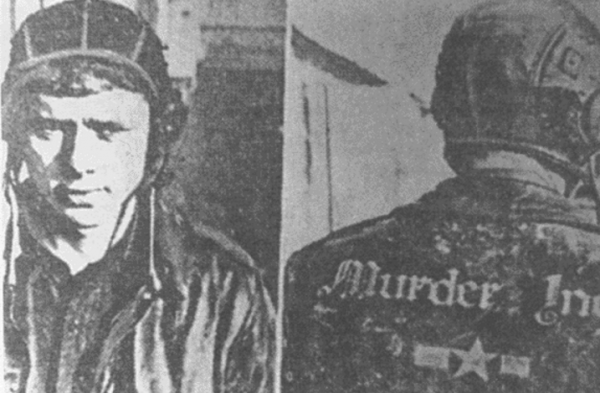
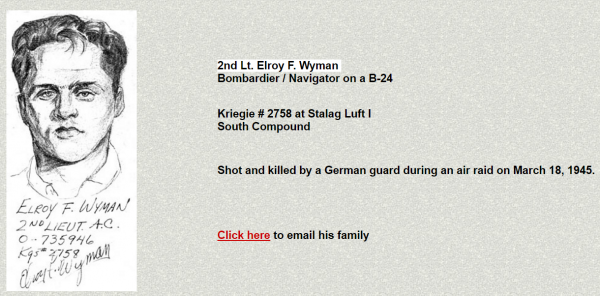
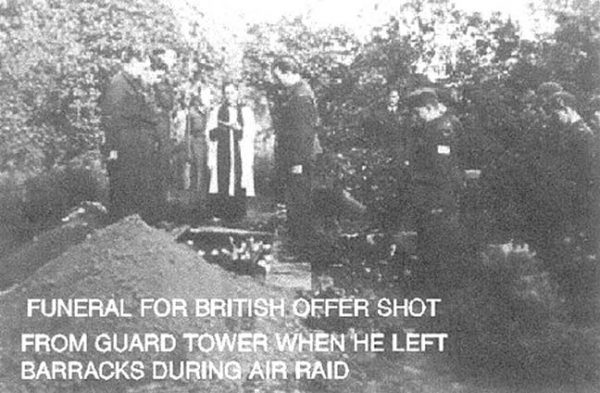
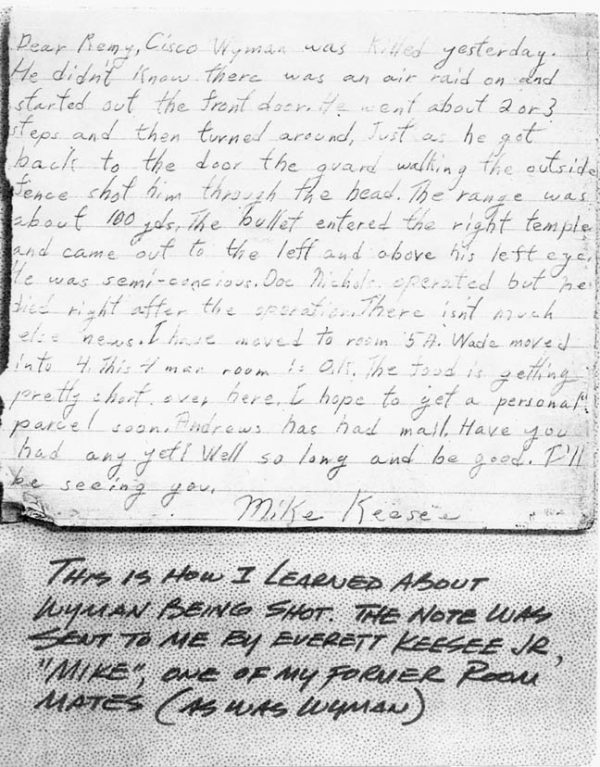
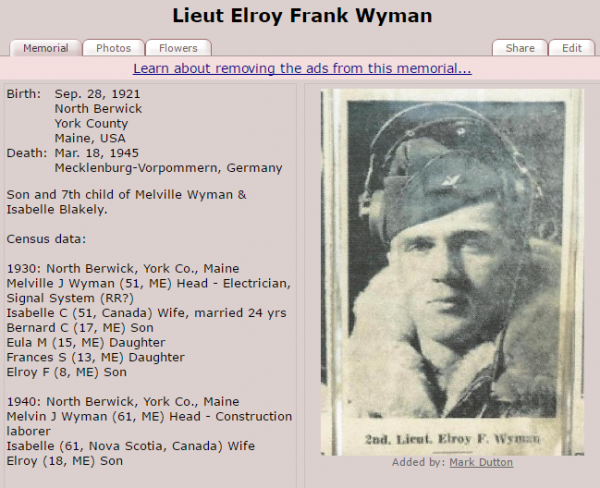
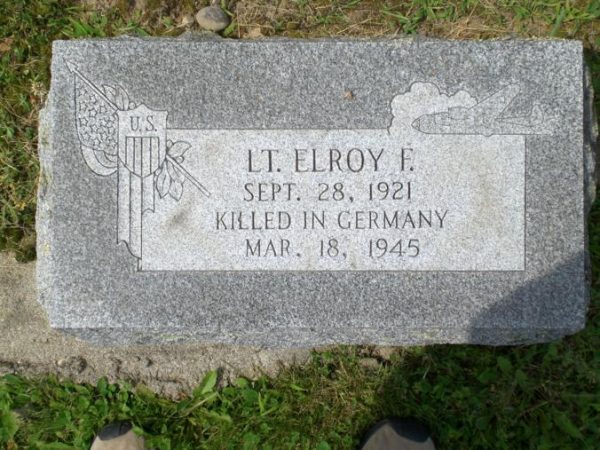
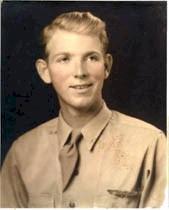







Comments
Thanks for a fine Christmas Eve post, Professor. Happy Hanukkah and Merry Christmas!
My dad, Lt Howard K Hinds, 104th I.D. “timberwolves” was captured Oct 26, 1944, near Breda. He was transferred by train to Oflag 64 in Szubin Poland. He spent Christmas 1944 there. We have a “menu” card from Christmas dinner in the camp. The rations were limited, packages limited. They once received a carton of ice skates from the Red Cross, only the left ones. Daddy blamed the Red Cross but a trip to Oflag 64 provided info that the Germans guards took the right skates as a prank. In early 1945, 7 columns were forced marched over 300 miles west to various prison camps in Germany as the Russians approached from the east. Daddy was sent to Stalag IIIA. Many died on the march. In late April, the Russians “liberated” Stalag IIIA, Daddy heard rumors they would be marched or sent to Odessa. He saw and opportunity to run for an opening in a fence and did so. He heard footsteps behind him and fully expected to be shot. He looked around and it was a French officer. They ran, hiding by day, moving west by nite and finally connected with Americans (happened to be Timberwolves) west and south of Torgau. Daddy was 6’1″ and weighed only 120lbs when repatriated. He also did not talk much about it. He did say that one of his first meals had maggots in it, and he carefully picked them out before he ate it. Later in his stay, he said, he left them in for the protein.We cannot imagine what he endured. He had a good life after the war — retired from the USArmy with 27 yrs. Raised 5 children and sent them all to college. He got a college degree in his 60s. Died in 1978.
I was familiar with the Murder Inc POW story, which is a great one. Well, great, in the sense of history is often so strange that you wouldn’t believe it if it were fiction. Thanks for the interesting read and Merry Christmas & Happy Hanukkah to all.
There was some justice:
Nazis being hanged for war crimes:
https://www.youtube.com/watch?v=oRHgB-x_KGo